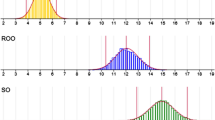Abstract
This paper describes an investigation into the usefulness of some instrumental methods (GC, NMR, and DSC) in the detection of adulteration of olive oil with soybean, sunflower, and canola oils (that are relatively cheap oils mixed as adulterants with olive oil). These seed oils were compared with genuine and commercial olive oils, two of which appeared to have been adulterated. It was observed that from among physical and chemical indices, the iodine value and the refractive index in the two olive oil samples (named A and B) were significantly higher (P < 0.01) than in the reference (genuine) olive oil, both values being above standard limits established for olive oil. On the other hand, fatty acid (FA) profiles in these two samples exhibited higher amounts of linolenic and linoleic acids (5.34 and 39.92%, 6.38 and 54.42%, 0.79 and 12.88% for A, B and genuine olive oils respectively) but significantly lower amounts of oleic acid (30.07, 21.72 and 67.86%, respectively). The number and intensity of signals observed using 1H NMR indicated that the peaks numbered 2 and 7 were useful in the determination of olive oil purity. Because of higher linolenic and linoleic acid contents in samples A and B, the intensity and integrated areas for these two signals were higher than those for other olive oil samples in which signal 2 was not observed and signal 7 had a very low intensity. Satisfactory results were achieved from quantitation of DSC parameters. The results show that due to increased unsaturated FAs in samples A and B and the consequent changes in triacylglycerol profiles, offset crystallization temperature and onset melting temperature in these two olive oils differed from those of the reference and clearly shifted to lower values. Crystallization and melting curves were similar to the corresponding curves observed for soybean and sunflower oils in terms of shape and number of peaks.






Similar content being viewed by others
References
Angerosa F, Servili M, Selvaggini R, Taticchi A, Esposto S, Montedoro G (2004) Volatile compounds in virgin olive oils occurrence and their relationship with the quality. J Chromatogr A 1054:17–31
Wesley IJ, Barnes RJ, McGill AEJ (1995) Measurement of adulteration of olive oils by near-infrared spectroscopy. J Am Oil Chem Soc 72:289–292
Ranalli A, Ferrante ML, De-Mattia G, Costantini N (1999) Analytical evaluation of virgin olive oil of first and second extraction. J Agric Food Chem 47:417–424
Aparicio R, Aparicio-Ruiz R (2000) Authentication of vegetable oils by chromatographic techniques. J Chromatogr A 881:93–104
Tsimidou M, Macrae R (1984) Authentication of virgin olive oils using principal component analysis of triglyceride and fatty acid profiles: part 2: detection of adulteration with other vegetable oils. Food Chem 25:251–258
Guillen MD, Ruiz A (2003) Edible oils: discrimination by 1H nuclear magnetic resonance. J Sci Food Agric 83:338–346
Lai YW, Kemsley EK, Wilson RH (1994) Potential of Fourier transforms infrared spectroscopy for the authentication of vegetable oils. J Agric Food Chem 42:1154–1159
Lopez-Diez EC, Bianchi G, Goodacre R (2001) Rapid quantitative assessment of the adulteration of virgin olive oils with hazelnut oils using Raman spectroscopy and chemometrics. J Agric Food Chem 51:6145–6150
Tan CP, Che Man YB (2002) Comparative differential scanning calorimetric analysis of vegetable oils: I. Effect of heating rate variation. J Am Oil Chem Soc 13:129–141
Guillen MD, Ruiz A (2001) High resolution 1H nuclear magnetic resonance in the study of edible oils and fats. Trends Food Sci Technol 12:328–338
Che Man YB, Tan CP (2002) Comparative differential scanning calorimetric analysis of vegetable oils: II. Effect of cooling rate variation. Phytochem Anal 13:142–151
AOCS (2003) Official method and recommended practices of the American Oil Chemists Society. In: Firestone D (eds) 5th edn. AOCS Press, Champaign
Ortega J, Lopez-Hernandez A, Garcia HS, Hill CG Jr (2004) Lipase-mediated acidolysis of fully hydrogenated soybean oil with conjugated linoleic acid. J Food Sci 69:FEP1–FEP6
International olive oil council. Trade standard applying to olive oil and olive pomace oil. Coi/T. 15/NC no. 2/Rev, 1997
Sacchi R, Patumi M, Fontanazza G, Barone P, Fiordiponti P, Mannina L, Rossi E, Segre AL (1996) A high-field 1H nuclear magnetic resonance study of the minor components in virgin olive oils. J Am Oil Chem Soc 73:747–758
Christopoulou E, Lazaraki M, Komaitis M, Kaselimis K (2004) Effectiveness of determination of fatty acids and triglycerides for the detection of adulteration of olive oils with vegetable oils. Food Chem 84:463–474
Tan CP, Che Man YB (2000) Differential scanning calorimetric analysis of edible oils: comparison of thermal properties and chemical composition. J Am Oil Chem Soc 77:143–155
Acknowledgments
The authors would like to acknowledge the Isfahan University of Technology for their financial support and B. Bahrami for his technical assistance.
Author information
Authors and Affiliations
Corresponding author
About this article
Cite this article
Jafari, M., Kadivar, M. & Keramat, J. Detection of Adulteration in Iranian Olive Oils Using Instrumental (GC, NMR, DSC) Methods. J Am Oil Chem Soc 86, 103–110 (2009). https://doi.org/10.1007/s11746-008-1333-8
Received:
Revised:
Accepted:
Published:
Issue Date:
DOI: https://doi.org/10.1007/s11746-008-1333-8




